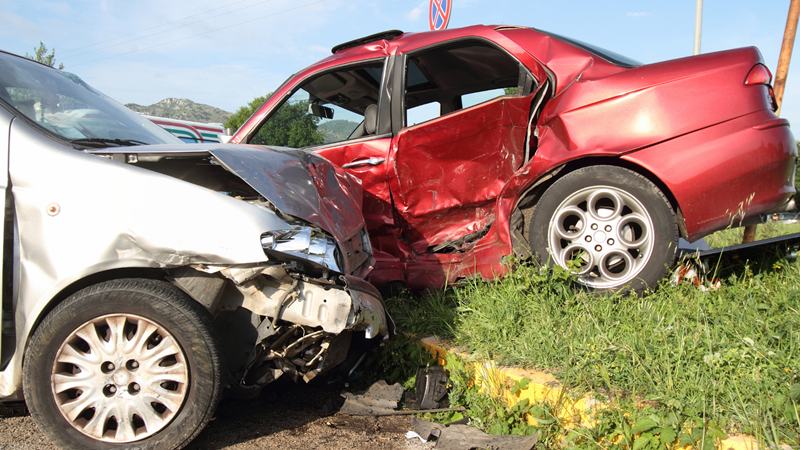What is ‘Emotional Distress?’
‘Emotional distress’ is the term commonly attributed to the effects of emotional anguish, psychological damage, and mental pain and suffering. In a word, it is trauma.
Trauma is caused by an incident or act that left a mark on the victim’s psyche. There is no standard metric to measure what may cause emotional trauma. What deeply affects one person may slide right off the next. And what we, as outside observers, may believe to be a minor accident may cause lasting mental anguish for the accident victims.
What Causes Emotional Distress?
There are many causes of emotional distress, and they vary wildly. A personal injury victim may suffer mental anguish due to the traumatic event (a violent car accident, for example), or their emotional suffering may be more related to the injuries. If an accident victim’s injuries require a long road to recovery – or if their lives are left forever altered, like instances of being left disabled or permanently scarred – those physical injuries may cause emotional pain.
Emotional distress can also arise from other, less extreme circumstances, for example:
- Abuse, either physical or mental.
- Accidents.
- Addiction to drugs.
- Assault.
- Dangerous working conditions.
- Dealing with ableism in the workplace when living with a disability.
- Experiencing discrimination at home or the workplace.
- Threats made to job security or salary.
- Toxic, abusive behavior of colleagues or family members.
- Unjustified job termination.
- Witnessing traumatic events, such as the wrongful death of a loved one.
What Are Some Examples of Emotional Distress?
Just as emotional distress can have a wide range of origins, it can also come in many forms.
Common examples of emotional distress include the following:
- Chronic migraines. Severe stress and pain can cause pounding headaches for which there seems to be no relief.
- Anxiety disorders and extreme mood swings, irritability, and anger. Following a traumatic event, it’s fairly common for victims to suffer from an acute stress disorder (ASD. This may cause symptoms like anxiousness, panic attacks, dissociation, and rage. ASD typically fades after about a month.
- Feelings of extreme guilt or shame. Sometimes even the accident victim may feel guilt or shame, whether from surviving while others did not or because of a diminished sense of self.
Flashbacks to the inciting incident. Flashbacks force the accident victim to relive their experiences again and again. - Insomnia and night terrors. Sleeping too much, too little, or experiencing horrific nightmares are commonly associated with surviving traumatic events.
- Negligent infliction of emotional distress (NIED) or the intentional infliction of emotional distress (IIED). Those who were negatively impacted by a traumatic event but did not suffer any injuries may have a case for NIED. And if another party intentionally harmed others emotionally, they may be charged in an IIED case.
- Pain and suffering. The term ‘pain and suffering’ casts a wide net. But it may cover instances of lost quality of life, inability to maintain social relationships, lost companionship or consortium, and new standards of living due to disfigurement or disability.
- Post-traumatic stress disorder (PTSD) and symptoms of depression, including clinical depression. PTSD and depression are mental health conditions that are difficult to see but deeply felt by those suffering from the ailments.
Is it Possible to Sue for Emotional Distress in Ohio?
Yes. Whether you’ve suffered physical injuries or mental anguish from an accident, you may be entitled to seek damages from those responsible for the incident. A successful case may reward plaintiffs with economic damages (such as medical bills, property damage, and lost wages), non-economic damages (like pain and suffering), and even punitive damages in cases of extreme conduct.
As with any personal injury claim, it’s wise to retain the services of legal professionals. But when seeking to prove emotional distress, it’s downright essential.
How Can a Victim and Their Personal Injury Attorneys Prove Emotional Distress?
It can take a lot to prove emotional distress, and you must hire an attorney to help make your case.
The lawyer may attempt to establish a timeline, indicating that your symptoms only began after the accident. The more severe the symptoms, the easier this will be to prove. Similarly, the more intense the inciting incident, the more likely others will be to believe your claim.
If there is any physical injury or bodily harm, then the personal injury attorneys will likely point to that as a cause for your mental distress. It’s unfortunate, but sometimes people can’t accept what they do not see, so if there’s an associated injury, it may help convince others.
It may also be necessary to speak with doctors and psychologists, then present their findings to the courts.
Schedule a Free Consultation with Experienced Personal Injury Lawyers
The Attkisson Law Firm is one of Ohio’s most experienced personal injury firms. Our lawyers have more experience than most other trial lawyers could ever hope for, so we bring a sense of accomplishment and confidence to every case. But we also strive to provide compassionate, client-first legal representation because we understand that your case is not a simple legal matter; it may very well be a defining chapter in your life. You deserve respect and care from your attorneys; we will provide you with that.
Our firm works on a contingency fee basis, meaning that we don’t get paid unless we win your case. Add to that our no-obligation, free case evaluation, and you may consider hiring our lawyers as a risk-free choice.
Call our Ohio law offices at 937-918-7555 for your free initial consultation today.





